JB: I went up [to the Cooper Studio] to get an appointment to see Chuck Cooper, but he was in the hospital with, I think it was a kidney problem or something. Chuck's brother Art was running the place, so I saw him instead.
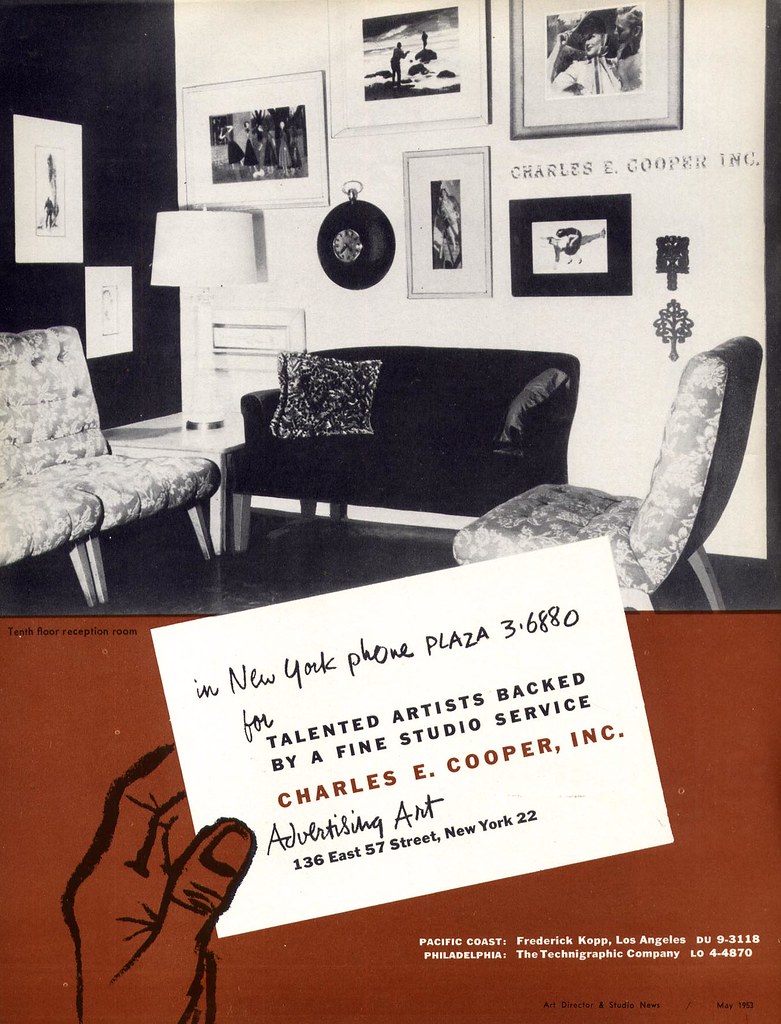
He said, "Yeah, we need an apprentice here." So I said, "Oh, that's good! What'll I do here?" And he said, "Well, you wash brushes and clean palettes and run errands..." and I said, "No, no, no... I'm an artist. I work at making art." [Joe chuckles] And he said, "Oh really?" [Mock incredulity] "Well that's the job. That's it."
This was a Friday so he says, "You go home and think about it."
I said, "Alright, I'll do that." and I walked out. And all the way home I was thinking, "I just... committed suicide. I had a chance to get in with the Cooper Studio and I blew it." I literally didn't sleep that weekend. Monday morning I went into the city - caught the five o'clock train or something - and I was sitting on the 57th and Lex doorstep of the building when it opened for the day. I went up and said to Art Cooper, "I'll take it."
(Below, a spread from a mid-50s Cooper Studio promotional brochure)
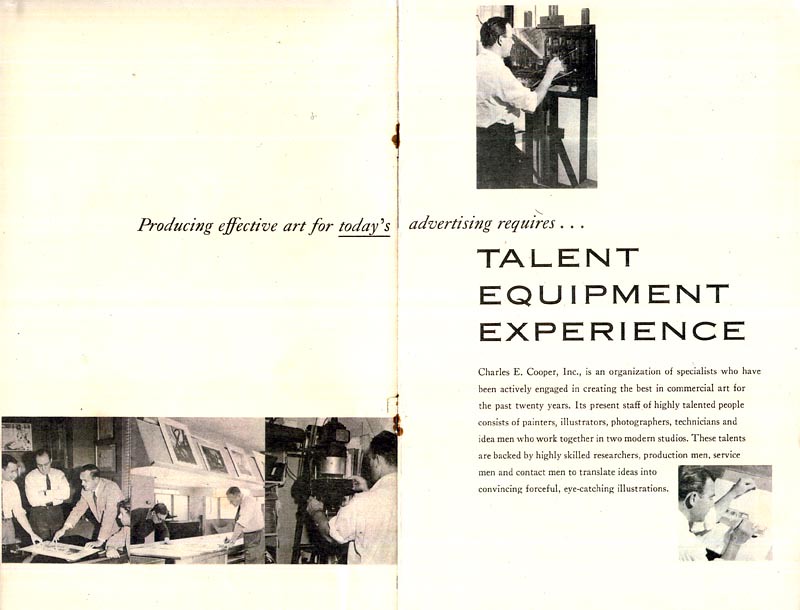
All the artists had studios around the exterior of this floor, the 9th floor, and in the centre was the bullpen, which is where I was. And then an equal amount of space in the middle was the salesmen's room. Right outside the entrance to the bullpen was Coby Whitmore's studio. So I was able to meet him and then watch him work.
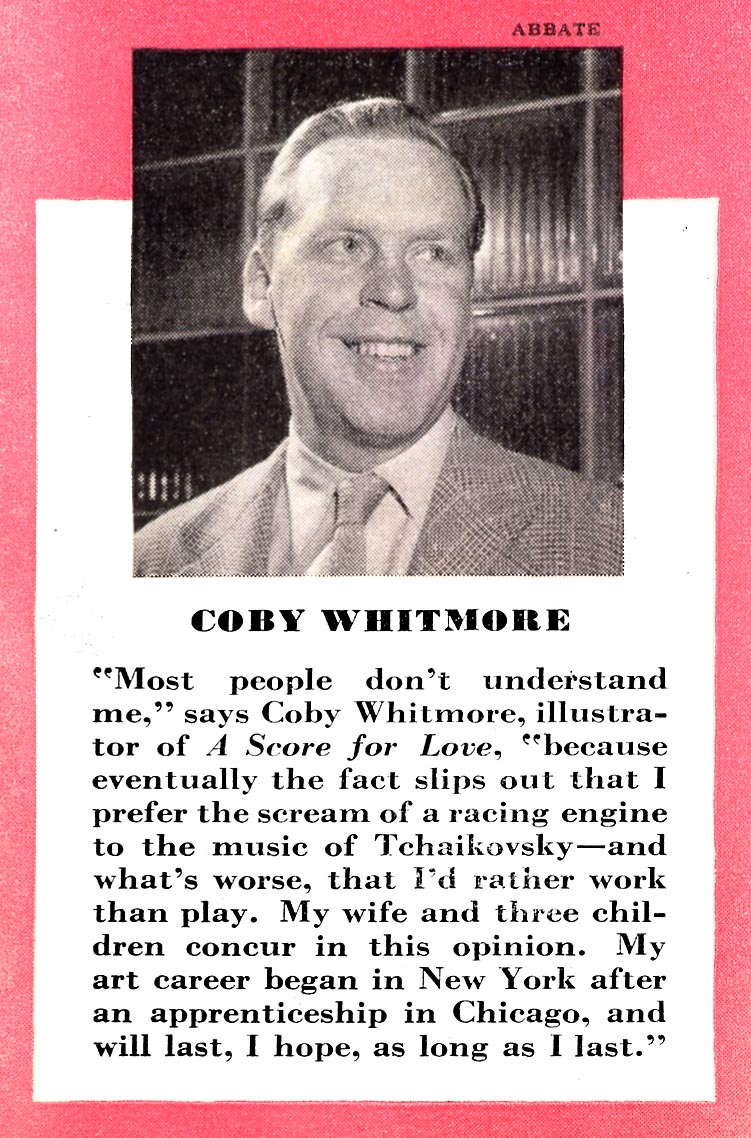
Every time I had any kind of a lull, that I wasn't doing anything, I was in that studio watching him paint. And he didn't paint there a lot because he had a studio at home, but let's just say I got to know him very well. [Joe chuckles]
(Below, a Coby Whitmore DPS from Cosmopolitan, February 1952)
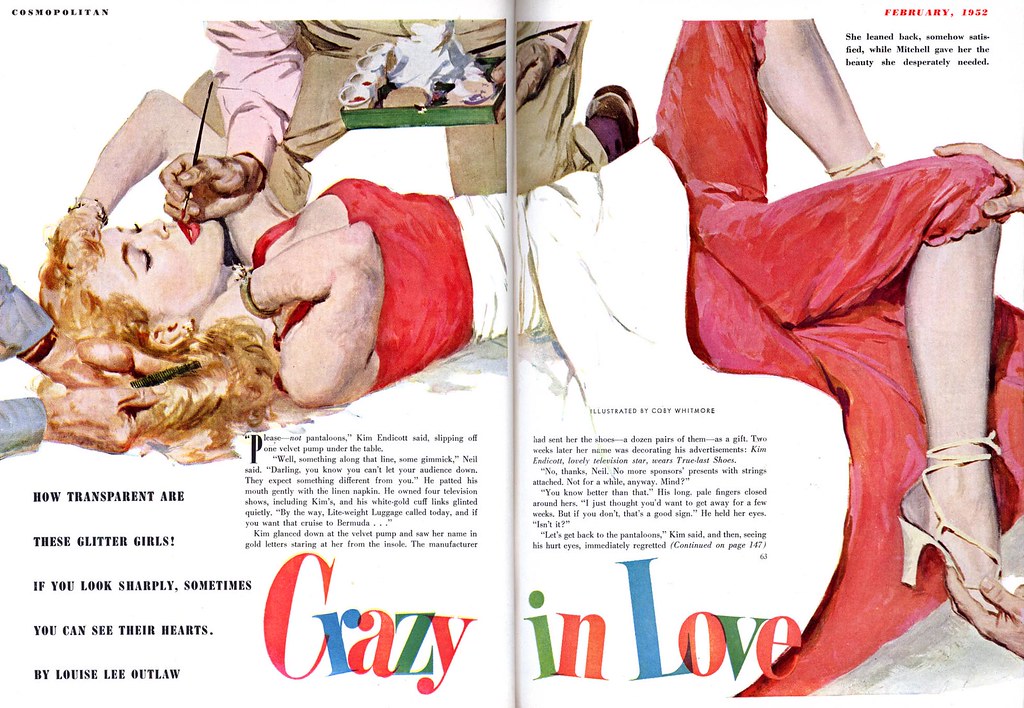
Now this is a little later, but I remember going out to lunch with them, and everybody having two or three martinis (Coby was a great martini drinker) and he'd sit down in the middle of his studio with all the salesmen and everybody standing around talking, and he would paint in about three quarters of an hour a pretty girl with a cigarette - I think it was a 24-sheet billboard - and he would do that beginning to end in about forty-five minutes, talking the whole time... [Joe chuckles] ... and I'd be watching every stroke, every mixture of paint.
(Below, Coby Whitmore, Good Housekeeping, September 1949)
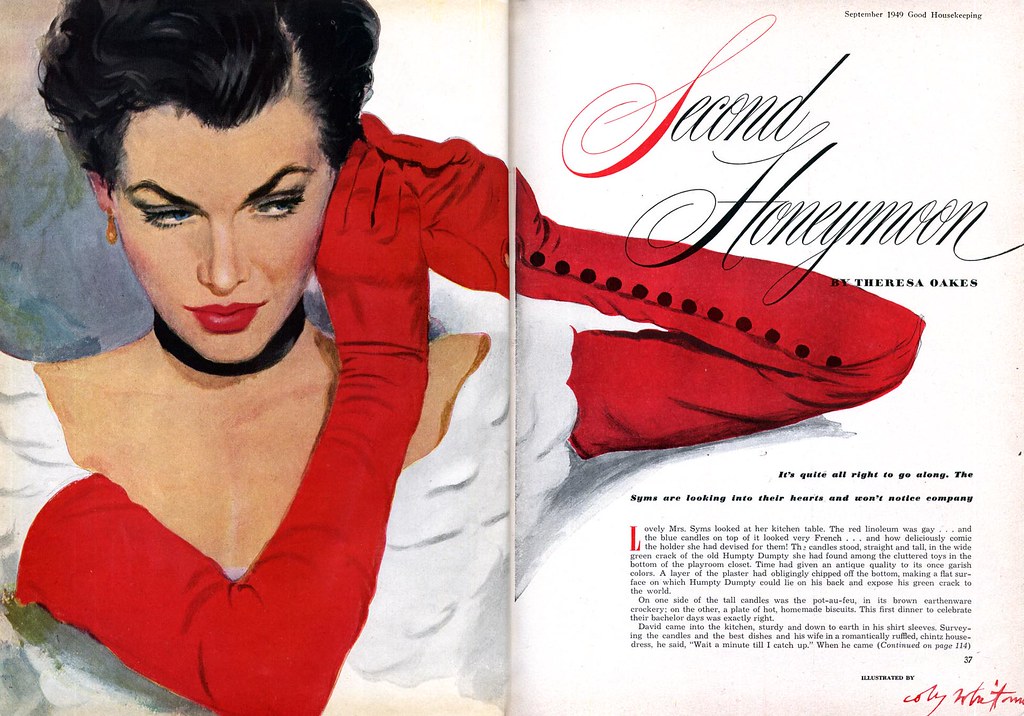
Then he'd give it to me and say, "Ok, wrap it up." I'd go out and matte it and wrap it and the salesman would go out and take it to the agency. That was a typical day. But just watching him work... every colour he put down on his palette, the way he applied the paint... that was my education really.
(Below, Coby Whitmore, Saturday Evening Post, March 1958)
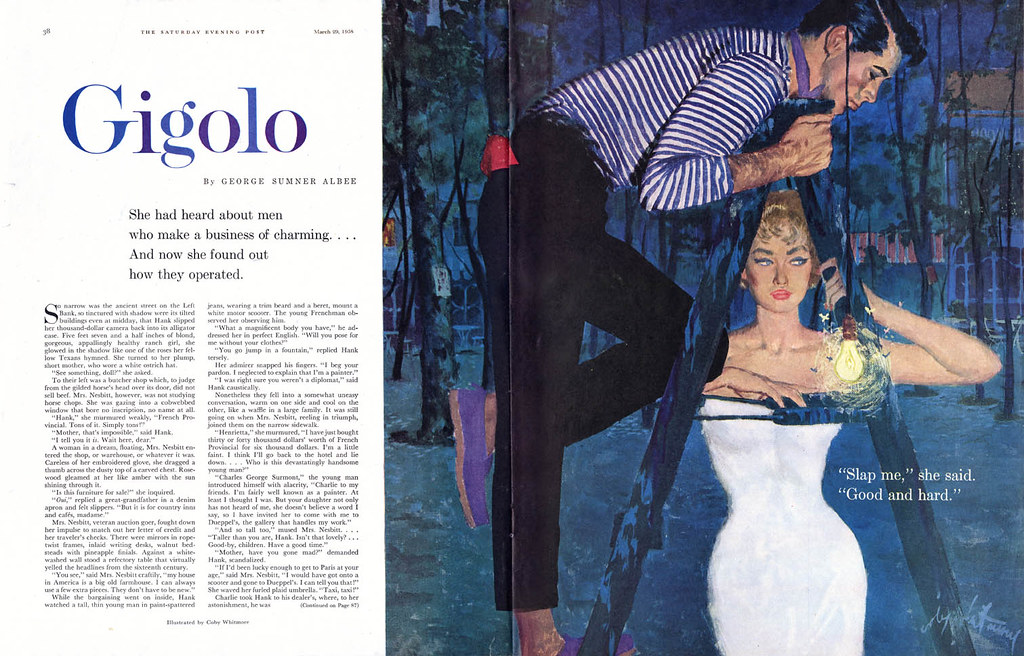
In fact, when I was going to night school at the Art Students League - the Frank Reilly class in drawing - I thought, well I guess I'll go sign up for his painting class too. In the middle of the first day of class, he started to tell everybody about the way to mix colours. He had this incredibly graduated value scale he was running down... and I finally put up my hand and said, "That not the way they do it." [Joe laughs]
(Frank Reilly conducting a class, year unknown)

He said, "Oh, really?" and I said, "Yeah, I'm working at the Cooper Studio." and he said, "Oh really? Well I guess you'd better just go and work there some more." [We both laugh] He literally kicked me outta the place.
(Below, magazine ad illustrated by Frank Reilly, 1954)

Which is amazing because, years later - I mean fifteen, twenty years later - the phone rings and it's Frank Reilly! He says. "Oh Joe, how are you? I'm just finishing up my book and putting the names of some of my more famous students in there..." [Joe chuckles] "...and I see your name is there, but I don't really remember too much about you."
(Below, a page from the Frank Reilly School brochure showcasing some famous former students)

LP: Hahaha... you didn't remind him that he kicked you out of class?
JB: Nooo, I didn't, I didn't. He asked me if he could use my name in his book and I said sure. [Joe chuckles]
LP: Now Joe, going back to when Art Cooper hired you and that early period when you were doing the work in the bullpen... at what point did you get to actually do some illustration work?
JB: I think it wasn't more than a month or two. Most of the fellows probably spent about a year in there. But at the end of a month or so, the head guy in the bullpen, Ernie Olsen, went to Art and said I wasn't working out. That I'm never there and don't do my work... and he told me this and I couldn't believe it! I said, "I do my work!" And he said, "Well, you're always off somewhere looking at the artists working."
(Below, Joe Bowler spread from Collier's, January 1954)

So he said he was gonna fire me... but luckily, up on the 11th floor, there was this fellow who was sort of like an art director for Cooper's. His name was Craig Bollman, a good old friend of Coby's, and Ernie said, "He needs a paste-up guy up there. So get your ass up there." So I was saved!
(Below, Joe Bowler, Collier's, April 1955)
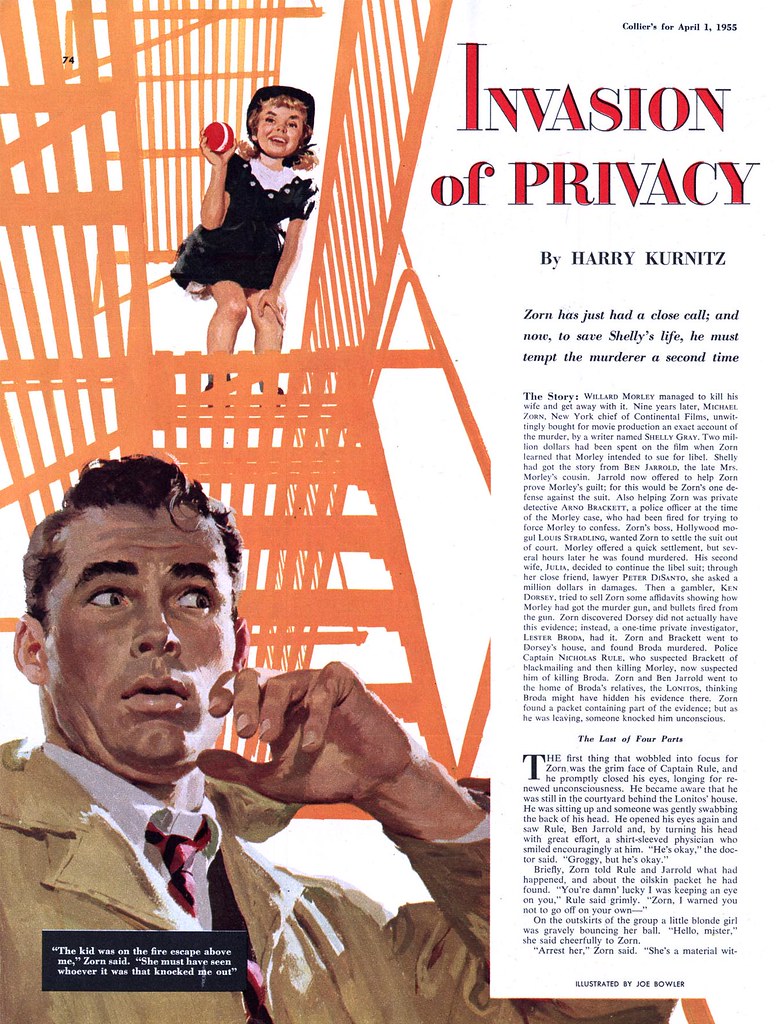
Craig took me in his office and said, "Do you know anything about paste-up?" I said, "No." He said, "You just wanna paint, don'tcha?" I said, "Yeah." He said, "Well, take that drawing board over there and let's see what you can do." So he allowed me to paint samples.
(Below, Joe Bowler, Good Housekeeping, January 1954)
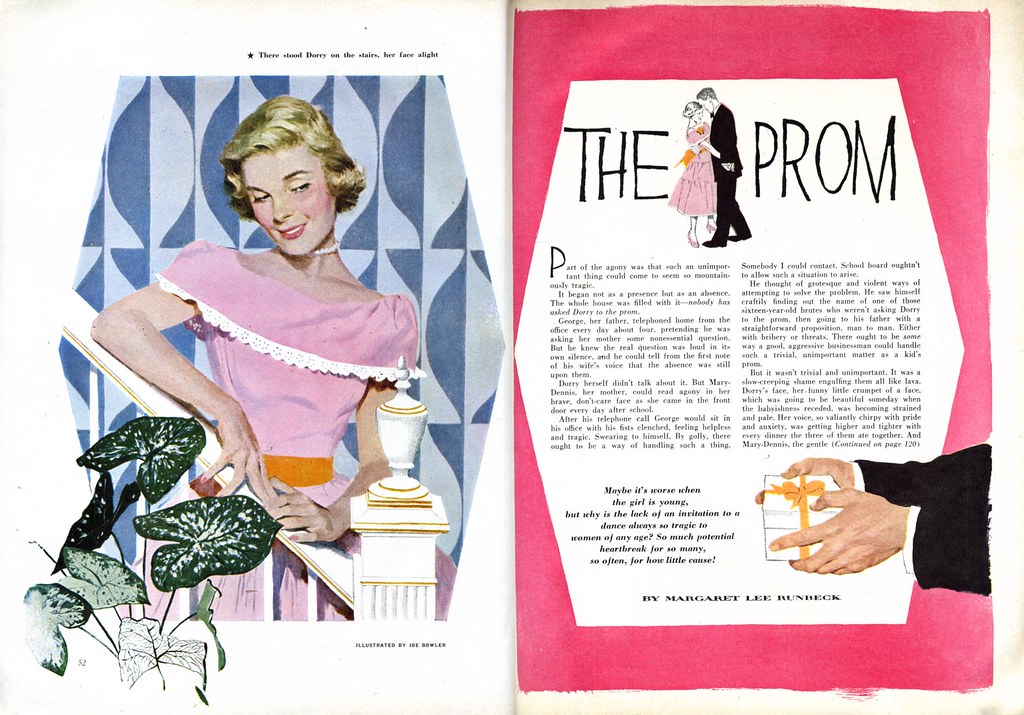
And the more I did, the more the salesmen looked at them. So my initial work was doing "bounced jobs" from other illustrators - either from Cooper's or other places - that the salesmen brought back because of some problem. And I would redo them and then they would go through. So I got more and more in with the salesmen - they loved me.
(Below, a Joe Bowler illustrated ad from 1952)
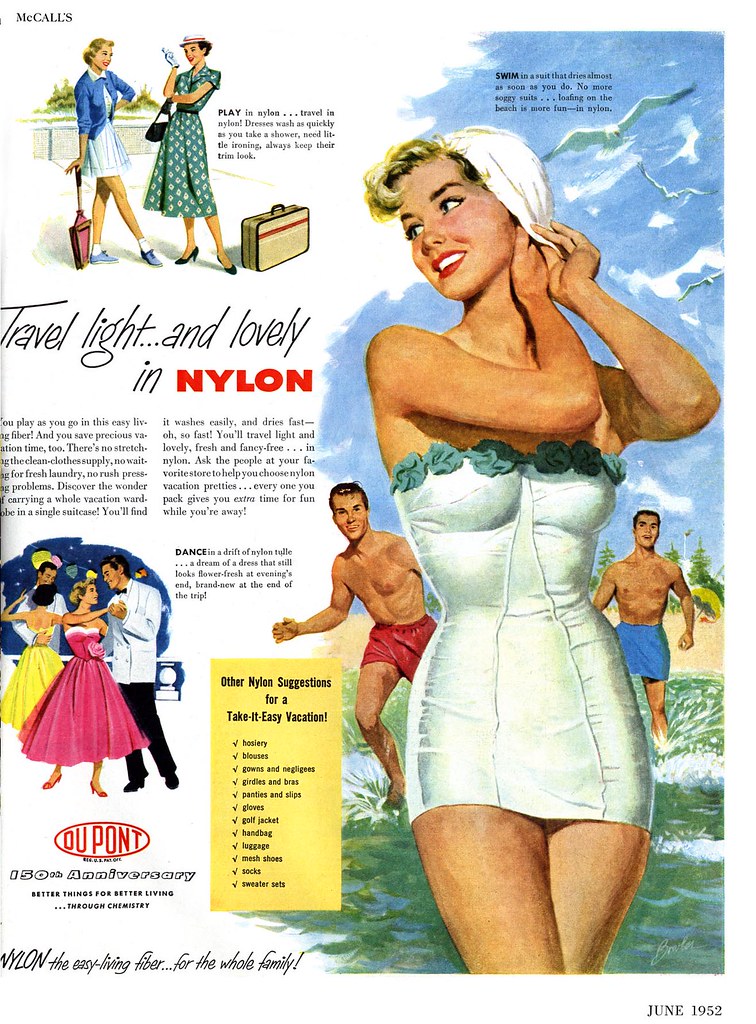
LP: So while you were doing these bounced job illustrations, were you also doing samples of the sort of 'boy/girl' romance illustrations Coby or Joe DeMers would do?
JB: Yeah... well, this was a little later... I was working all night on this painting of a head of a pretty girl. Coby came in with an illustration he'd done for Cosmo and wanted it matted and he saw this painting and he said, "Hey, put a matte on that; I'll take it with me."
(Below, Joe Bowler illustration, date and publication unknown)
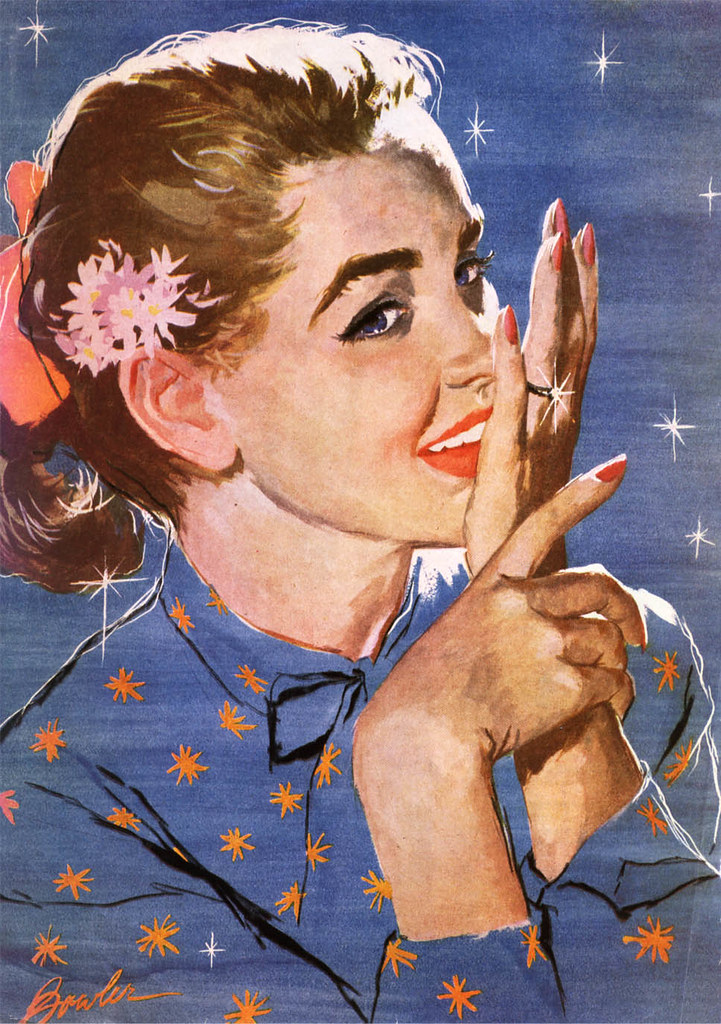
So he took it with him to Cosmo, to Frank Eltonhead, the art director. When he came back he said, "They bought it - just bill 'em for a thousand." Well, a thousand dollars to me at that time was the same as a million! You know? A thousand dollars!
(Below, Joe Bowler, Good Housekeeping, July 1957)
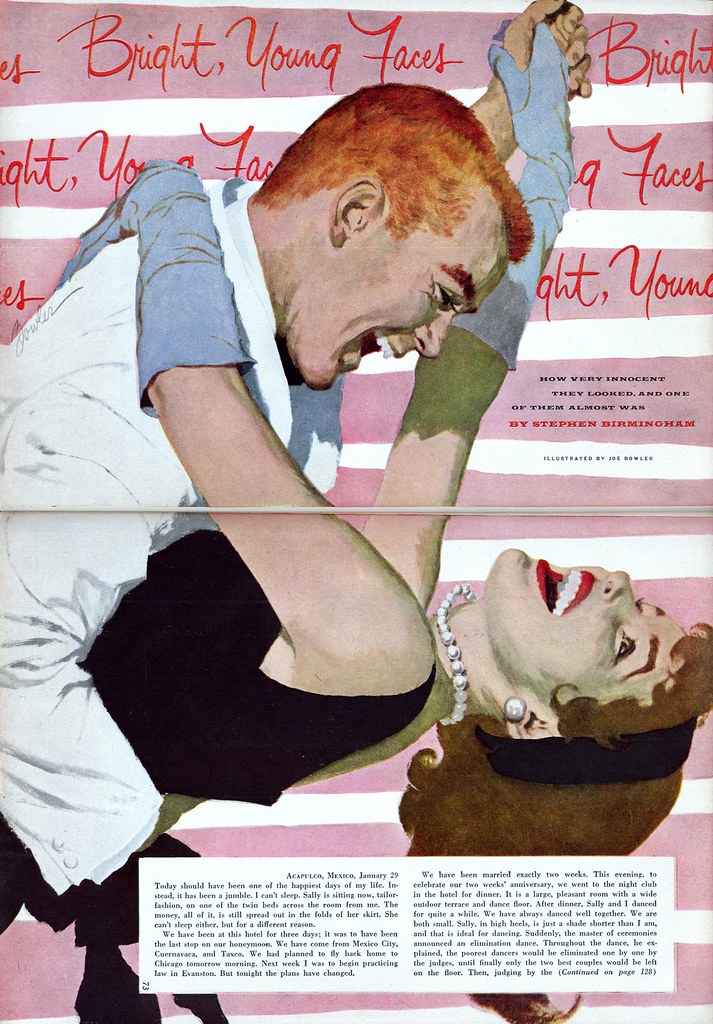
I don't think it was more than three months or so, I was in about three or four magazines.

(Above, photo of Joe as featured in Ladies Home Journal, March 1953, in conjunction with his first assignment for the magazine, shown below)

LP: That's astounding.
JB: Yeah, it really happend so quickly.
Continued tomorrow
* to see recent works by the artist, visit Joe Bowler's website
Thank you for providing the interview
ReplyDeletewith Joe Bowler. I am really enjoying
it.
Great to hear these stories, especially the one about the stint in Frank Reilly's class. I always wondered whether working illustrators really mixed as many as 10 values. It's so cool that Joe got to see Coby doing real jobs. Cooper Studios must have been an amazing place to get an education!
ReplyDeleteLooks so old school. I love the concept.
ReplyDeletesitus judi slot
ReplyDeletempo99
Very Nice And Interesting Post, thank you for sharing
ReplyDeleteOwn Inspirational Quotes
Quality Excellence Quotes
Powerful World Quotes
Train Hard Gym Quotes
اقوال ممتازة
Future Oriented Quotes
Gain Independent Quoteslo
Gain Success Quotes
Good Exam Quotes
Belle Famose Citazioni